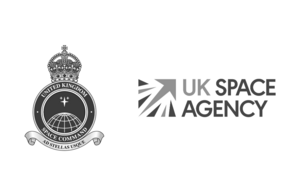How we protected the UK and space in August 2024
This report was issued in September 2024 and covers the time period 1 August 2024 to 31 August 2024 inclusive.

The National Space Operations Centre is led by the UK Space Agency and UK Space Command in partnership with the Met Office.
The National Space Operations Centre (NSpOC) protects UK interests in space and on Earth and works with international partners to ensure space remains safe, sustainable and accessible to all.
Summary
Overall risks to UK interests in space and on Earth from space-related threats, risks, and hazards were higher in August than in July with more re-entry, conjunction and space weather alerts issued. All NSpOC warning and protection services functioned as expected throughout the period.
Uncontrolled Re-Entry Early Warning
We monitored 89 uncontrolled re-entries in August to protect the UK and UK Overseas Territories as well as support our international partners. This represents more than double the number of objects re-entering the Earth’s atmosphere in August than July. This is largely a result of the planned decommissioning of small communications satellites.

Chart showing number of re-entries monitored by month. January: 13, February: 24, March: 25, April: 22, May: 56, June: 48, July: 44, August: 89
In-Space Collision Avoidance
We warned UK-licensed satellite operators of 2,137 potential collision risks in August. This represents a 19% increase in risks over the previous month. Our warnings allow operators to take critical collision avoidance decisions.

Chart showing number of collision risks to UK licensed satellites monitored by month. January: 1,690, February: 1,943, March: 1,903, April: 1,899, May: 2,560, June: 1,881, July: 1,795, August: 2,137
Fragmentation incidents
Reports indicated that a rocket body fragmented on 6 August, generating more than 250 pieces of debris. Investigations suggest that the cause may be linked to possible passivation (de-activation) activities. We are actively monitoring the event and will notify UK operators if there is any significant risk to their spacecraft.
Space weather
August saw an increase in space weather alerts issued by the Met Office from July. Solar flaring through much of August caused minor to moderate radio blackouts on the day side of Earth. Stronger flares which occurred on 5th, 8th and 14th August gave strong radio blackouts on the day side of Earth whilst CME arrival on 4th August gave moderate to strong geomagnetic storms.
A series of CME arrivals from 10th August culminated in strong to severe geomagnetic storms on the 12th with a further CME arrival on 17th August gave a moderate storm. Lengthy CME influence from 27th through to 31st August gave some minor to moderate storm intervals.
The strong to severe storms have the potential to have caused increased drag and orientation corrections for satellites, and problems with GNSS and radio signals. The minor to moderate storms may have caused some minor impacts to satellite operations.
You can find more information on space weather and NSpOC here.
Number of Objects in Space
There were 21 launches in August and a total increase in the Satellite Catalogue of 595 registered space objects (RSOs). Of those launches, 12 were performed by SpaceX to deploy an additional 112 Starlink satellites. The remaining RSOs came from the addition of debris pieces from the aforementioned fragmentation of a rocket body which increased the in-orbit population significantly.
Note that numbers in the registered space objects catalogue can fluctuate over time as data is continually verified.

Chart showing number registered space objects by month. January: 28,014, February: 28,172, March: 28,478, April: 28,752, May: 28,850, June: 28,931, July: 28,917, August: 29,297
Comments
The National Space Operations Centre combines and coordinates UK civil and military space domain awareness capabilities to enable operations, promote prosperity and protect UK interests in space and on Earth from space related threats, risks and hazards.